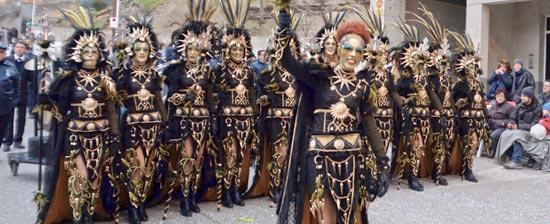 | ||
Moros y Cristianos ([ˈmoɾos i kɾisˈtjanos]) or Moros i Cristians ([ˈmɔɾoz i kɾistiˈans]) literally in English Moors and Christians, is a set of festival activities which are celebrated in many towns and cities of Spain, mainly in the southern Valencian Community. According to popular tradition the festivals commemorate the battles, combats and fights between Moors (i.e. Muslims) and Christians during the period known as Reconquista (from the 8th century through the 15th century).
Contents
The festivals represent the capture of the city by the Moors and the subsequent Christian reconquest. The people who take part in the festival are usually enlisted in local associations called filaes (singular: filà) or comparses (companies that represent the Christian or Moor legions). The festivals last for several days, and feature festive parades with bombastic costumes loosely inspired by Medieval fashion. Christians wear fur, metallic helmets, and armor, fire loud arquebuses, and ride horses. In contrast, Moors wear ancient Arab costumes, carry scimitars, and ride real camels or elephants. The festival develops among shots of gunpowder, medieval music, and fireworks, and ends with the Christians winning a simulated battle around a castle.
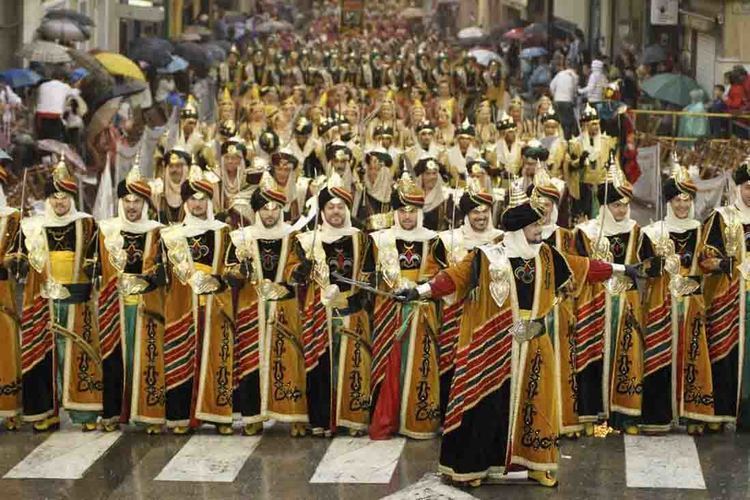
Fiestas de moros y cristianos alcoy
Venues
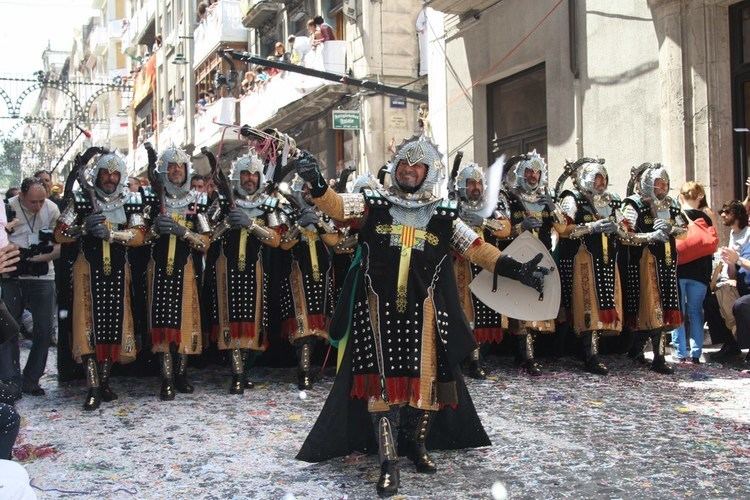
The most well-known Moors and Christians festival takes place in Alcoi (Valencian Community) from 22 to 24 April, around the Feast Day of Saint George (Valencian/Catalan: Sant Jordi; Spanish: San Jorge), the patron saint of Catalonia, Aragon and formerly also of the Valencian Land. According to legend, after James I of Aragon reconquered the city of Alcoi, the Moors, in turn, tried to recover it. As fighting was about to resume, Saint George miraculously appeared, and the frightened Moors scattered in defeat. Other traditions ascribe a miraculous saintly appearance to Saint James (Santiago), the patron saint of Spain, particularly at the Battle of Las Navas de Tolosa (in what today is the municipality of La Carolina, Province of Jaén, Andalusia), sometimes guiding the Christians to surprise the Moors; else rallying Christian forces during the battle. The feast day of St. James is 25 July, so some of the Moors' and Christians' festivals occur at the end of July. La Vila Joiosa / Villajoyosa celebrates it in the last week of July, with a reenactment of the Berber pirate attack of 1538 (desembarc), according to tradition repelled when St. Martha (feast day 29 July) sent a flash flood. Especially in northern and western Spain (Catalonia, Valencian Land, and other places), parades associated with Corpus Christi celebrations may feature gigantic costumed Moors and Christians, also commemorating the Reconquest.

Other noteworthy Moors and Christians festivals are celebrated in the towns of Bocairent (a Medieval town, 1–5 February), Banyeres de Mariola (22-25 April), Villena with approximately 12,000 participants (most crowded festival), Biar, Cocentaina, Crevillent, El Campello, Elche, Elda, Muro d'Alcoi, Oliva, Ontinyent (late August), Orihuela, Petrel, Sax, Monforte del Cid, and some districts of the city of Alacant.
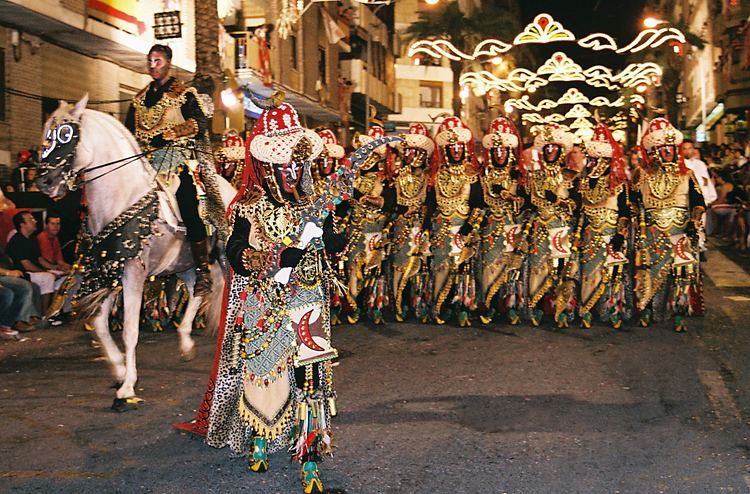
Andalusia also has very interesting Moors and Christians performances, especially in the former Moorish kingdom of Granada. Performances are mostly organized in rural towns and villages, such as Válor, Granada, a small town in the Eastern Alpujarras.
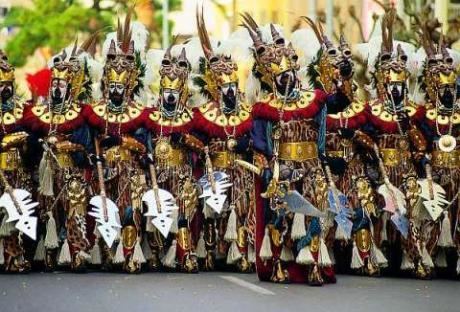
Spaniards took this tradition overseas. In the Philippines, fiestas often include a moro-moro play. The show begins with a parade of stars in colorful costumes: Christians wear blue costumes, while Moors wear fully ornamented red costumes. Mexico, Guatemala, and Colombia also have festivals featuring Moors and Christians reenactments.
Music
A live marching band plays one of three kinds of music called marchas moras, marchas cristianas and pasodobles.
